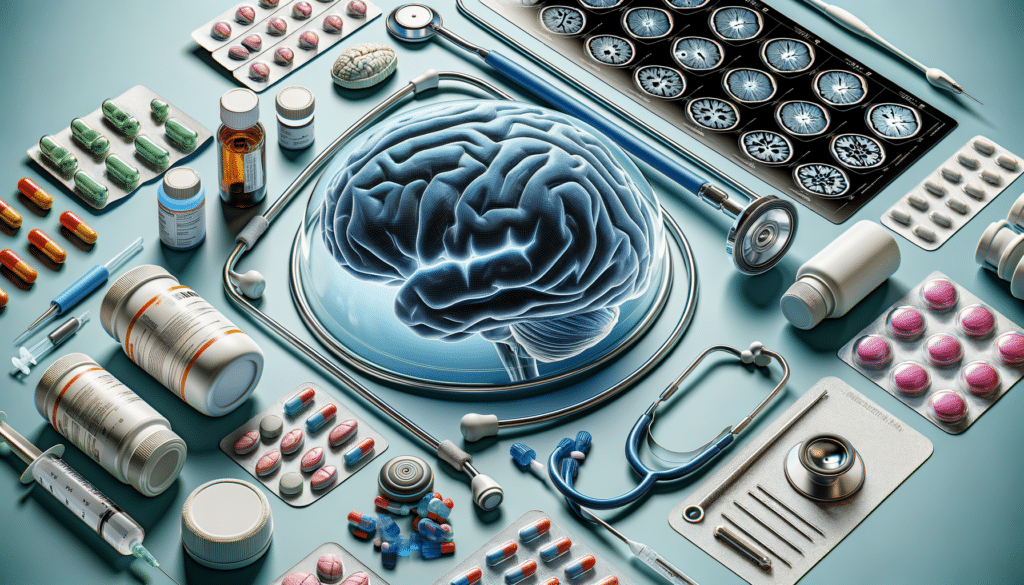Understanding Parkinson’s Disease
Parkinson’s disease is a chronic and progressive movement disorder that affects millions worldwide. It primarily impacts the motor system, leading to symptoms such as tremors, stiffness, and difficulty with balance and coordination. The root cause of Parkinson’s is the gradual loss of dopamine-producing neurons in the brain, particularly in the substantia nigra. Dopamine is a crucial neurotransmitter that helps regulate movement, and its deficiency leads to the hallmark symptoms of the disease.
While the exact cause of neuron degeneration in Parkinson’s remains unknown, a combination of genetic and environmental factors is believed to play a role. Research has identified several genetic mutations that may increase the risk of developing Parkinson’s, although these account for only a small percentage of cases. Environmental factors, such as exposure to pesticides and heavy metals, have also been implicated in increasing risk.
Understanding the underlying mechanisms of Parkinson’s is vital for developing effective treatments. As researchers continue to explore the disease’s pathology, they aim to uncover more about its progression, paving the way for innovative therapies that could potentially slow or halt its advancement.
Pharmacological Treatments
The cornerstone of Parkinson’s treatment is pharmacological intervention, primarily aimed at replenishing dopamine levels or mimicking its effects. One of the most widely used medications is Levodopa, which the brain converts into dopamine. Levodopa is often combined with Carbidopa, which prevents its premature conversion outside the brain, ensuring more reaches the target area.
Other medications include dopamine agonists, which mimic dopamine’s effects without needing conversion. These are often used in the early stages of Parkinson’s or alongside Levodopa to enhance its efficacy. Monoamine oxidase-B (MAO-B) inhibitors are another class of drugs that prevent the breakdown of dopamine, thereby increasing its availability in the brain.
While these medications can significantly improve symptoms, they are not without side effects. Patients may experience nausea, dizziness, or dyskinesia (involuntary movements) as a result. Therefore, treatment plans must be tailored to individual needs, balancing symptom relief with potential adverse effects.
Non-Pharmacological Approaches
In addition to medication, non-pharmacological approaches play a critical role in managing Parkinson’s disease. Physical therapy is often recommended to improve mobility, flexibility, and balance. Regular exercise can help maintain muscle strength and enhance overall well-being. Activities such as walking, swimming, and tai chi are particularly beneficial.
Speech therapy may be necessary for those experiencing difficulties with speech and swallowing, common issues in Parkinson’s. Occupational therapy can assist patients in maintaining independence by teaching adaptive techniques for daily tasks.
Moreover, a balanced diet rich in antioxidants is encouraged to support brain health. Omega-3 fatty acids, found in fish and flaxseeds, are particularly noted for their potential neuroprotective benefits. These lifestyle modifications, combined with medical treatment, can significantly enhance the quality of life for those with Parkinson’s.
Advanced Therapies and Surgical Options
For patients with advanced Parkinson’s or those who do not respond well to medication, surgical options may be considered. Deep Brain Stimulation (DBS) is a prominent surgical treatment that involves implanting electrodes in specific brain areas. These electrodes deliver electrical impulses to regulate abnormal brain activity, effectively reducing symptoms like tremors and rigidity.
DBS is typically recommended for patients who have had Parkinson’s for several years and whose symptoms are not adequately managed by medication. While DBS can offer significant improvement, it is not a cure and does not halt disease progression. The procedure carries risks, such as infection or bleeding, and requires careful patient selection and follow-up.
Other experimental therapies, including gene therapy and stem cell treatment, are being explored as potential options for Parkinson’s. These innovative approaches aim to address the disease at its root, offering hope for more effective and long-term solutions in the future.
Living with Parkinson’s: Support and Resources
Living with Parkinson’s disease can be challenging, but a strong support system can make a significant difference. Support groups provide a platform for individuals to share experiences, learn from others, and gain emotional support. These groups often include caregivers and family members, fostering a community of understanding and encouragement.
Various organizations offer resources, educational materials, and advocacy for Parkinson’s patients and their families. These resources can help navigate the complexities of the disease, offering guidance on treatment options, lifestyle adjustments, and coping strategies.
Furthermore, mental health support is crucial, as Parkinson’s can impact emotional well-being. Counseling or therapy can help patients and their families manage the psychological aspects of the disease, promoting a more positive outlook and enhancing overall quality of life.





